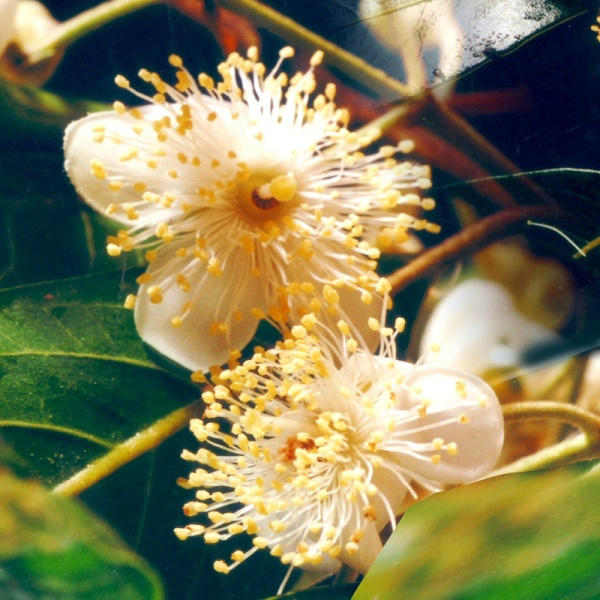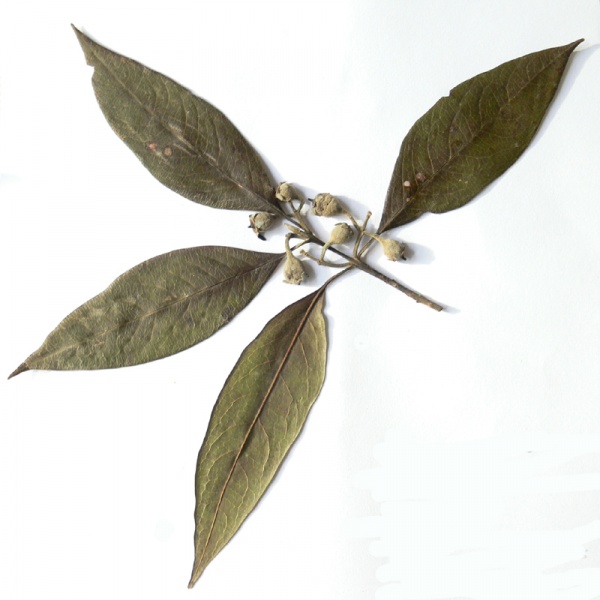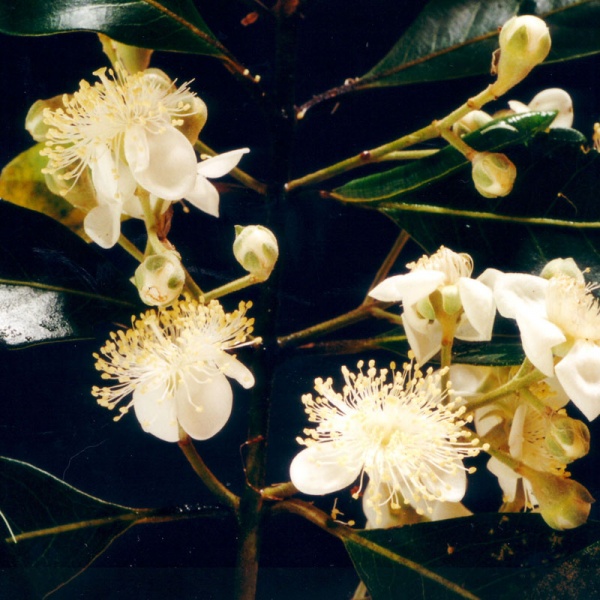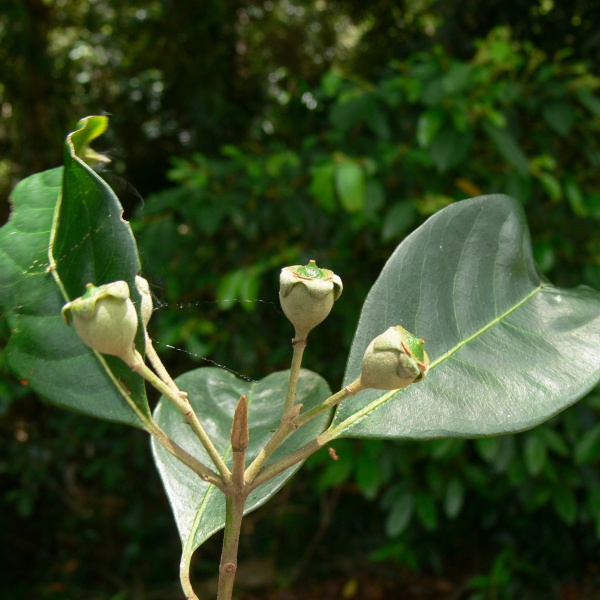Scientific Name: Rhodomyrtus psidioides
-
Pronunciation:row-dough-MIR-tus sid-ee-OY-dees
-
Common Name:Native guava




-
Derivation:Rhodomyrtus: Gr. rhodon -rose, Gr. myrtos - myrtle psidioides: L. psidium - the Guava tree, Gr. eidos - like
-
Type:
-
Family:MYRTACEAE
-
Flowers:White, 15 mm dia, stamens numerous, in racemes or panicles from leaf axils or terminal. Spring/summer.
-
Fruit:Berry globose or ovoid, 15–25 mm long, 10–15 mm wide, yellow and fleshy; persistent sepals reflexed near summit. Feb.
-
Vegetation Type:Littoral and Sub-tropical Rainforest, along margins of moist open forest and watercourses.
-
Species List:Kin Kin Arboretum, Hedges, Bush food, Wooroi Day Use Area Tracks, BSDoonan, Cranks Creek, Upper Yandina Creek, Dandaloo, Noosa River NP, Heritage Park,
Cultural Notes
TAKE CARE! Some information about bush foods and medicines may be anecdotal. Correct identification and preparation is essential:
Bush Food: Fruit reported to be edible when soft.
Identification Notes
Branchlets, new growth and terminal buds densely hairy; ||Leaves aromatic when crushed.||Bark: brown scaly bark; ||young branchlets and inflorescences pubescent with pale hairs. ||
Landscaping Notes
Hardy, fast-growing, but requires moderate watering. ||Cuttings strike easily. ||Makes an excellent screen plant, but likes well composted soil. Prune to maintain a bushy habit. ||Drought and frost tender. ||Can be used as pioneer species.||Full sun best to achieve a dense plant.||Propagation is from seed, ripening February-March, and germinating easily. It is a hardy fast-growing plant that tolerates a range of conditions. ||Useful in coastal areas as a bushy screen. |||Successfully propagated by Mooloolah Native Nursery||Successfully propagated by Barung Landcare||


